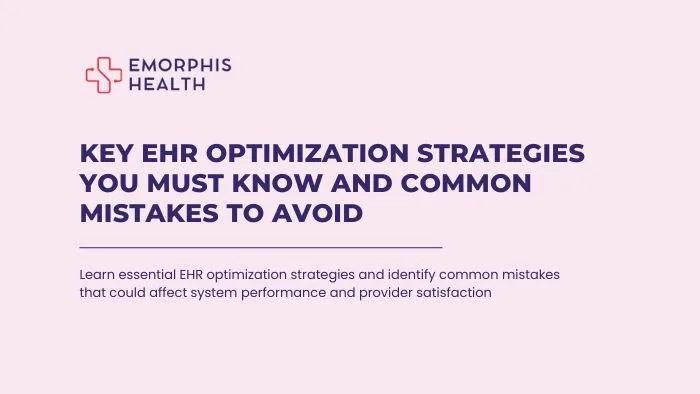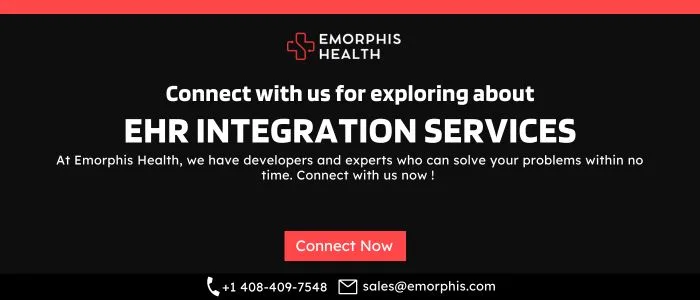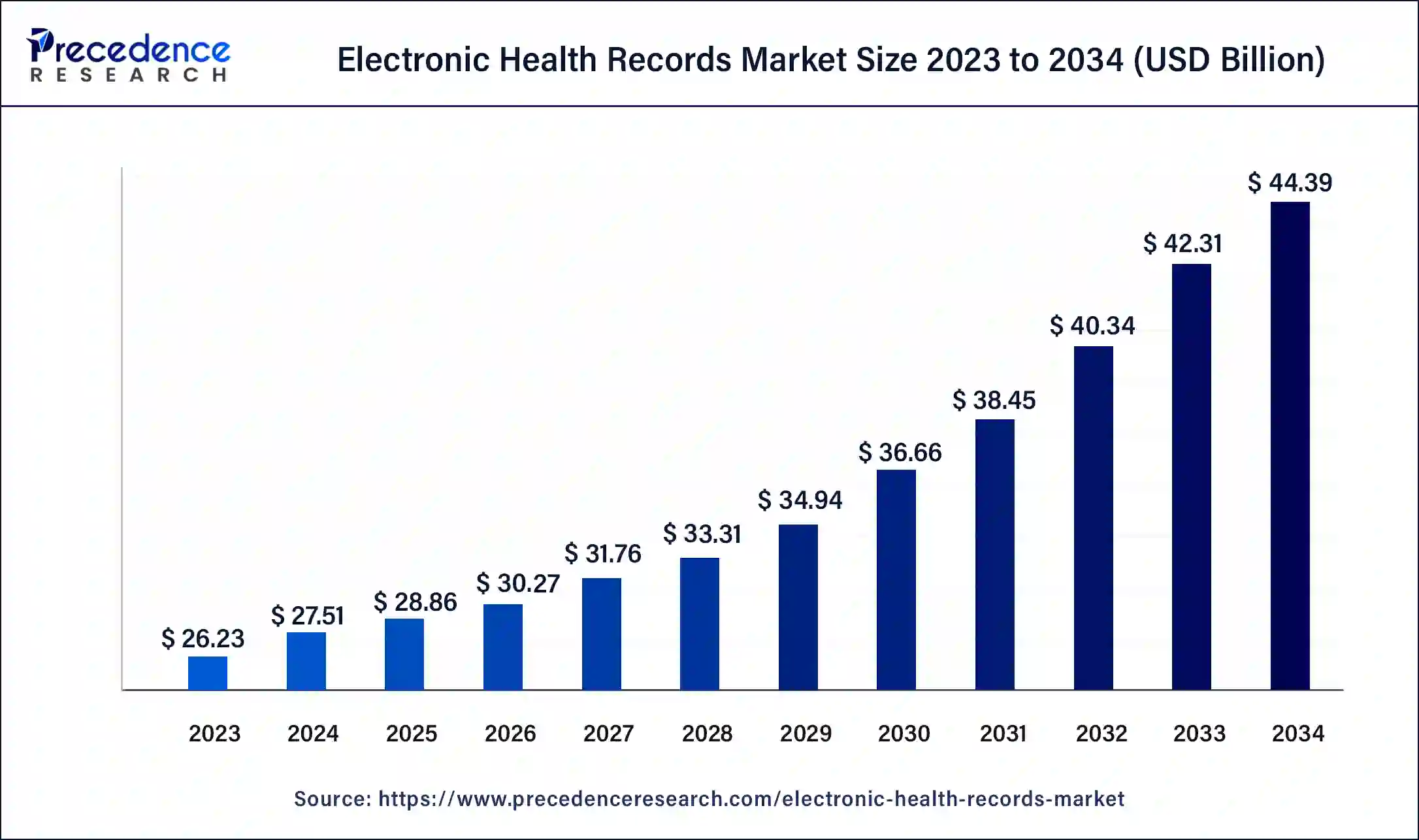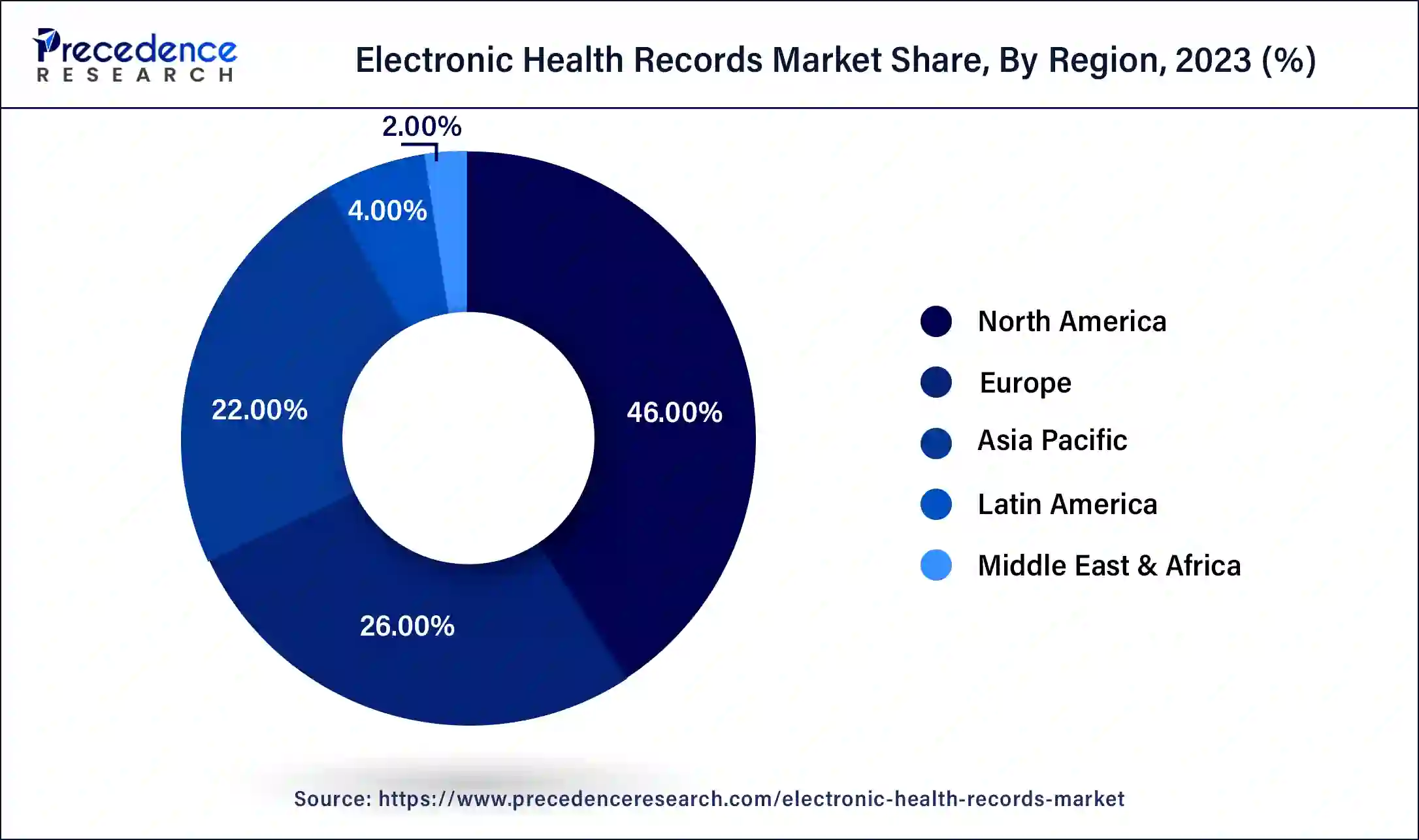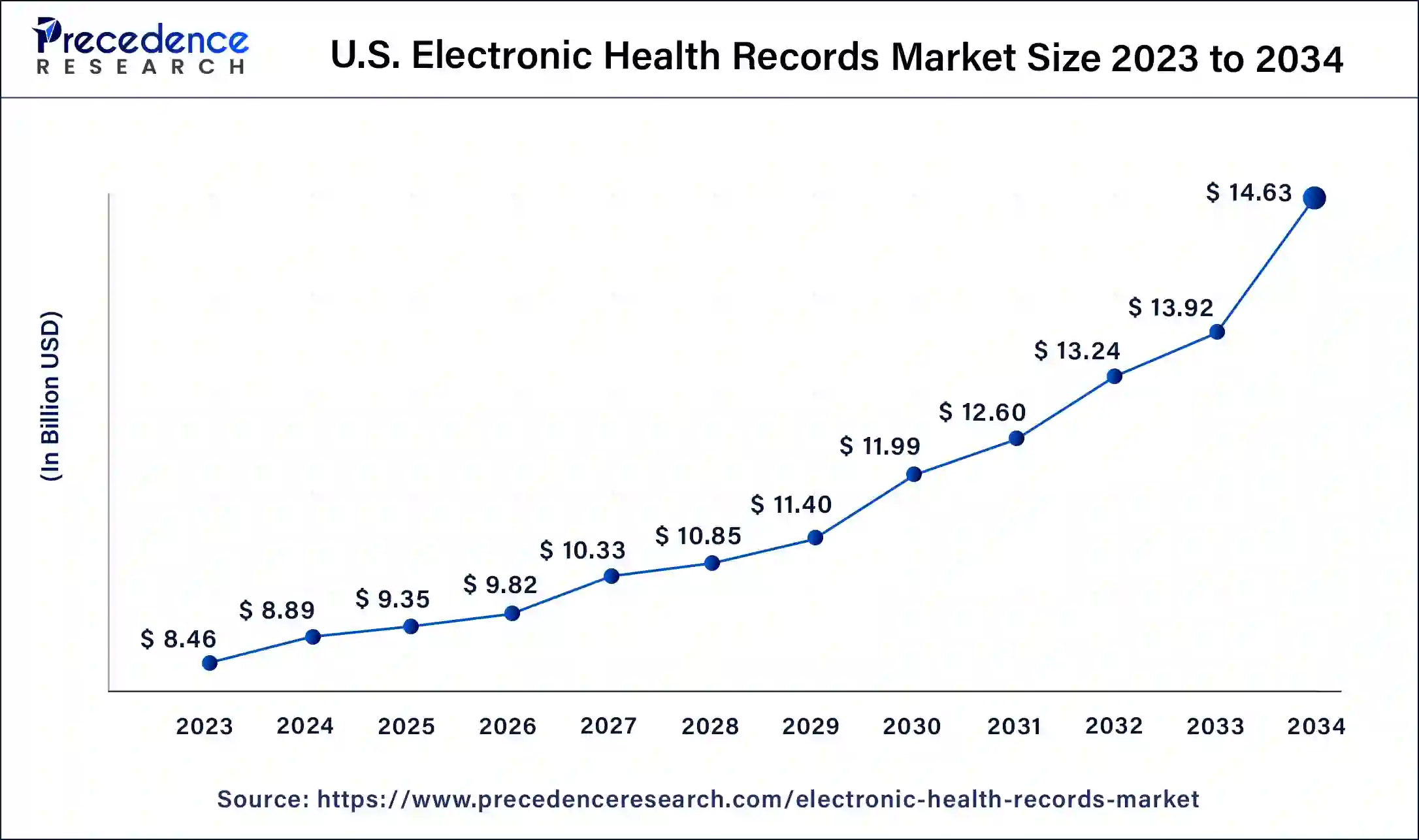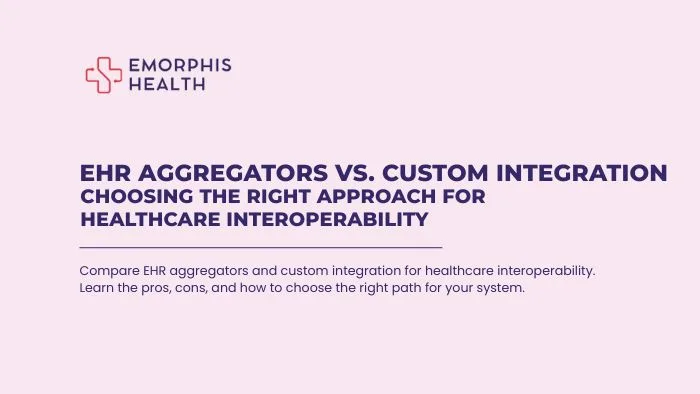Introduction to EHR Optimization
See Contents
In today’s fast-paced healthcare environment, Electronic Health Records (EHR) have become a cornerstone of patient care. EHR systems are designed to streamline patient data management, facilitate better communication between healthcare providers, and improve clinical outcomes. However, simply adopting an EHR system isn’t enough—optimizing it for peak performance is essential. EHR optimization ensures these systems are used effectively, improving workflows, reducing administrative burdens, and enhancing patient care.
In this guide, we will delve into the importance of EHR optimization, the key strategies to implement it, and how organizations can benefit from optimized EHR systems. We’ll also cover how EHR optimization services can assist healthcare providers in achieving these goals, allowing them to get the most out of their EHR systems.
EHR Market Overview
Optimizing EHR systems requires a thoughtful approach to ensure they meet the needs of healthcare providers while enhancing patient care. Implementing EHR optimization strategies can make a significant difference in a healthcare organization’s ability to provide efficient and high-quality care. Below, we explore some of the most effective strategies for optimizing EHR systems.
1. Customizing EHR to Fit Clinical Workflows
One of the primary EHR benefits is the ability to tailor the system to specific clinical needs. Many EHR systems come with predefined templates and settings, but these may not always align with the unique workflows of every healthcare practice. Customization is crucial to ensure that the system is user-friendly and supports the daily tasks of healthcare providers.
Moreover, customization can improve both clinical productivity and accuracy. By configuring the system to match the specific needs of a practice or hospital department, providers can reduce the time spent on data entry and decrease errors. For example, customizing forms, creating templates for common conditions, and adjusting order sets can enhance the clinician’s efficiency and workflow.
2. Leveraging EHR Analytics for Better Decision-Making
Data analytics plays a pivotal role in EHR optimization. By using EHR optimization services that incorporate advanced analytics, healthcare providers can gain deeper insights into patient data, which helps with decision-making. EHR systems that are integrated with analytics tools allow providers to monitor patient outcomes, track trends, and identify opportunities for improvement.
In fact, the use of EHR optimization analytics can help healthcare providers predict patient needs and prevent adverse events. For example, identifying patterns in patient care can lead to more accurate diagnoses and timely interventions. Moreover, analytics can help organizations measure performance against industry benchmarks, ensuring that they are meeting quality care standards.
3. Streamlining Clinical Documentation
Clinical documentation is an essential part of healthcare, but it can often be cumbersome and time-consuming. An optimized EHR system should streamline documentation, making it easier for healthcare providers to input accurate and comprehensive data without interrupting patient care. Utilizing speech recognition and voice-to-text features, for instance, can significantly reduce the time spent on manual documentation.
Furthermore, reducing the documentation burden is one of the key ways to combat clinician burnout, a growing issue in the healthcare industry. EHR optimization strategies that focus on enhancing clinical documentation can alleviate some of this stress, allowing clinicians to spend more time with patients rather than navigating complex EHR systems.
4. Ensuring Data Security and Compliance
EHR systems store sensitive patient information, making data security a top priority. As healthcare organizations handle more electronic data, it is crucial to ensure that the EHR system adheres to the latest data protection regulations, such as HIPAA in the United States. This is where EHR optimization specialists come into play. By implementing security features like encryption, two-factor authentication, and regular security updates, healthcare providers can minimize the risk of data breaches.
In addition, EHR optimization services can assist organizations in maintaining compliance with changing regulations. For instance, staying up-to-date with the latest requirements ensures that the EHR system is always compliant, reducing the risk of penalties.
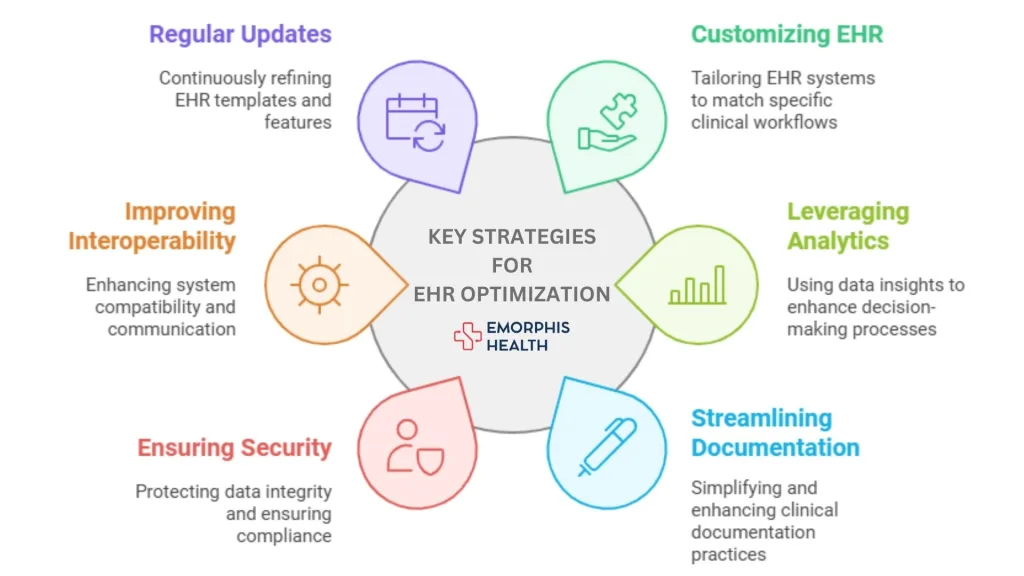

5. Improving Interoperability with Other Systems
Interoperability is another key component of EHR optimization. To ensure a seamless exchange of information, EHR systems must be able to communicate with other healthcare technologies, such as Laboratory Information Systems (LIS), Radiology Information Systems (RIS), and Health Information Exchanges (HIEs). Optimizing EHR for interoperability enables healthcare providers to access a complete view of patient data, regardless of where the patient receives care.
As a matter of fact, improved interoperability not only enhances the quality of care but also reduces redundant tests and procedures, lowering healthcare costs. By integrating EHR with other systems, healthcare providers can offer more coordinated and patient-centered care.
6. Regularly Reviewing and Updating EHR Templates and Features
To keep pace with changing clinical practices, healthcare organizations must regularly review and update their EHR templates, forms, and features. Over time, certain workflows may evolve, or new technologies may become available. EHR systems must be agile enough to adapt to these changes. EHR optimization specialists can assist in the continuous evaluation of EHR templates to ensure that they reflect the most current medical practices.
Moreover, regular updates ensure that the system is free of bugs and performs optimally. It’s important to stay proactive in maintaining the system’s relevance and efficiency, especially as the healthcare landscape continues to evolve.
Common EHR Optimization Mistakes and How to Avoid Them
As with any technological implementation, optimizing an EHR system can come with challenges. Understanding common pitfalls and how to avoid them is essential for achieving the desired outcomes. Below are some of the most common EHR optimization mistakes and strategies to overcome them.
a. Failing to Properly Train Staff
One of the most frequent mistakes organizations make is not providing adequate training to their staff. EHR systems can be complex, and without proper training, users may struggle to navigate the system efficiently. This can lead to user frustration, inefficiencies, and errors.
To avoid this, organizations should invest in continuous EHR optimization services that include regular training sessions and refresher courses. Ensuring that staff members fully understand how to use the system’s features—such as customizing templates or entering data—will result in smoother workflows and more accurate patient records.
b. Overcomplicating Customization
While it is important to customize EHR systems to fit the specific needs of a practice, overcomplicating the system with too many features or complex workflows can have the opposite effect. Over-customization can create confusion for users and slow down system performance.
The key is to find a balance. Customize the system to improve efficiency, but keep it simple and intuitive. Work with an EHR optimization specialist to identify the most critical features that will enhance your practice’s workflow, and avoid unnecessary complexity.
c. Ignoring User Feedback
Another common mistake is failing to gather and incorporate feedback from users. Healthcare professionals who interact with the EHR system daily often have valuable insights into how the system can be improved. Ignoring this feedback can lead to missed opportunities for further optimization.
Organizations should establish a feedback loop where users can share their experiences and suggestions. By regularly evaluating and refining the system based on user input, healthcare providers can ensure that the EHR continues to meet their evolving needs.
d. Underutilizing EHR Features
Many EHR systems come with a wide array of features designed to enhance productivity, but healthcare providers may fail to utilize them fully. Features like automated alerts, clinical decision support tools, and reporting functions can significantly improve workflow, but they are often overlooked.
Healthcare organizations should work with an EHR optimization specialist to ensure that all available features are being used to their fullest potential. Regularly reviewing system capabilities and identifying underutilized tools can help enhance productivity and improve patient care.
Measuring the Success of EHR Optimization
Measuring the success of EHR optimization is essential to understanding whether the strategies and tools being implemented are having the desired effect.
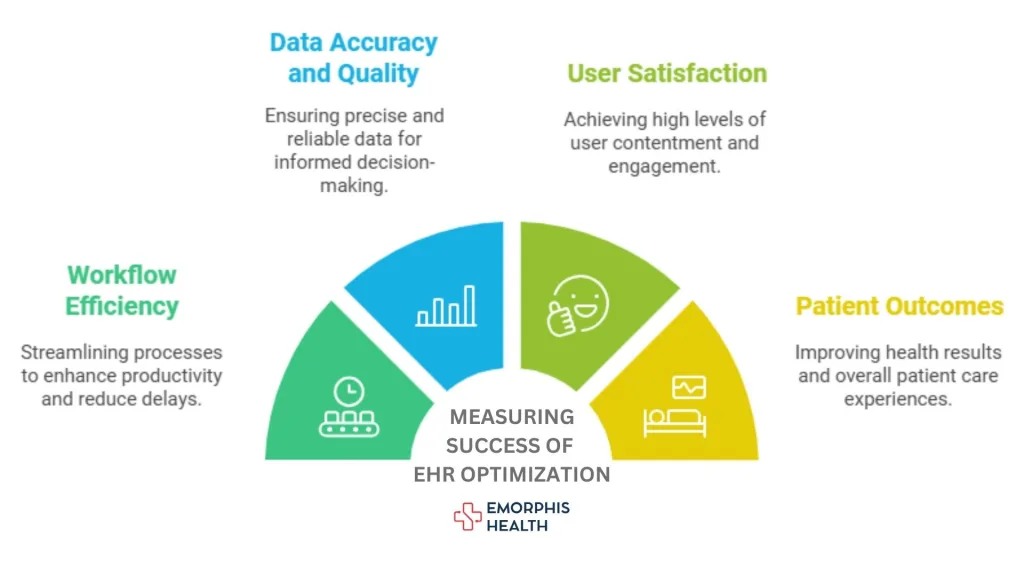

Below are some of the key metrics and methods for evaluating EHR optimization.
i. Workflow Efficiency
One of the most direct ways to measure success is by assessing improvements in workflow efficiency. This includes tracking the amount of time healthcare providers spend on administrative tasks, such as data entry and patient record management. A successful EHR optimization should reduce the time spent on these tasks, allowing clinicians to focus more on patient care.
ii. Data Accuracy and Quality
Another key performance indicator (KPI) is data accuracy. Optimized EHR systems should improve the accuracy of patient records, reduce errors, and make data more accessible and actionable. Monitoring the accuracy of data input, as well as the number of data discrepancies or mistakes, can help measure the effectiveness of EHR optimization services.
iii. User Satisfaction
User satisfaction is an important metric for understanding whether EHR optimization strategies are working. Conducting surveys or interviews with healthcare providers to gauge their satisfaction with the system can provide valuable insights. Higher satisfaction levels typically correlate with improved system usability and better overall outcomes.
iv. Patient Outcomes
Finally, improved patient outcomes can serve as an indirect measure of EHR optimization success. By enhancing the accuracy of patient data, streamlining workflows, and improving communication between healthcare providers, optimized EHR systems can lead to better patient outcomes, such as fewer medical errors, faster diagnoses, and more effective treatments.
Future Trends in EHR Optimization
As healthcare continues to evolve, so too will EHR systems. Below are some of the key trends that are expected to shape the future of EHR optimization.
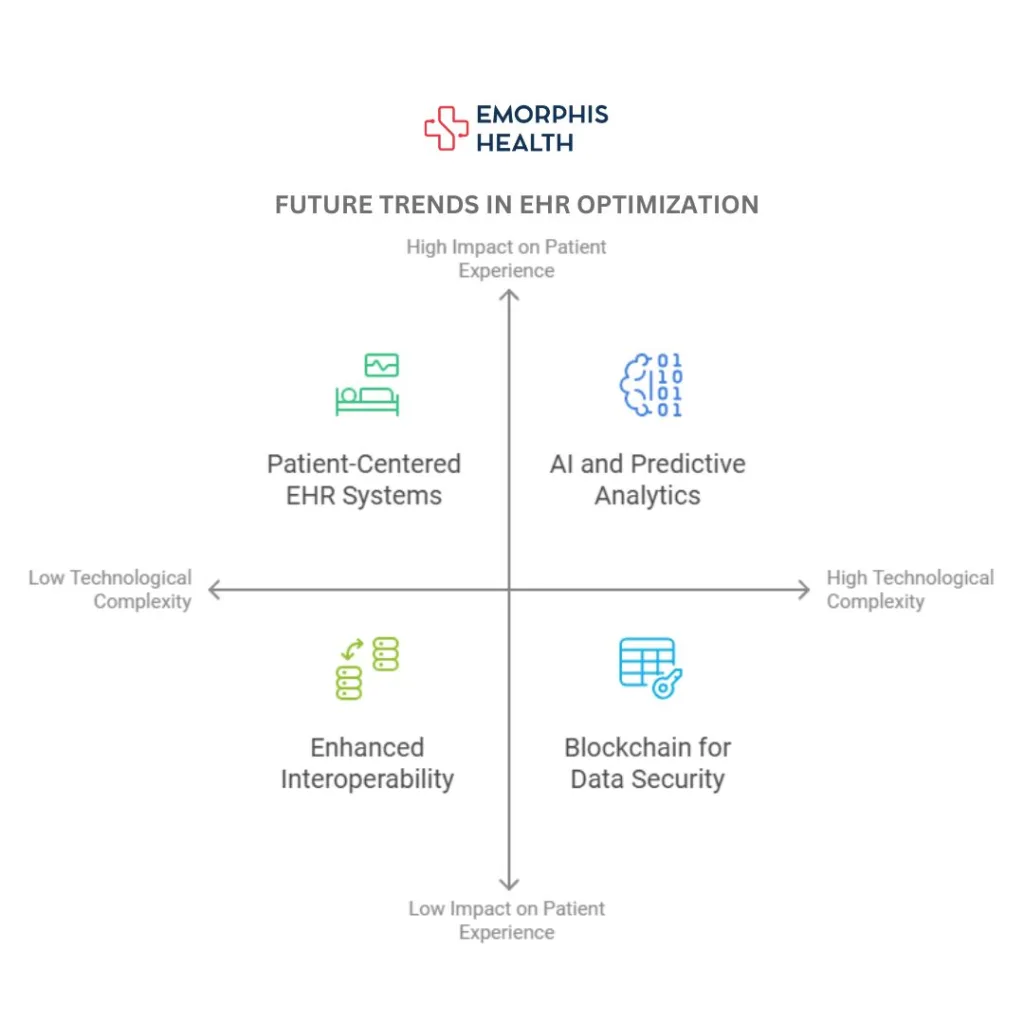

1. AI and Predictive Analytics
AI and predictive analytics will continue to play a pivotal role in EHR optimization strategies. By leveraging machine learning algorithms, EHR systems will become more adept at predicting patient needs, identifying potential health risks, and suggesting preventative measures.
2. Enhanced Interoperability
As healthcare systems become increasingly interconnected, the ability for EHR systems to communicate with other healthcare platforms and devices will become even more important. Future EHR systems will focus on seamless data exchange, enabling better care coordination across multiple providers and improving patient outcomes.
3. Blockchain for Data Security
In the future, blockchain technology could revolutionize data security in healthcare. By providing an immutable, decentralized ledger for patient records, blockchain can ensure that patient data is protected from breaches while maintaining data integrity.
4. Patient-Centered EHR Systems
As healthcare becomes more patient-centered, EHR systems will evolve to give patients more control over their health data. Features such as patient portals, where individuals can access their health information and communicate with providers, will become more advanced, improving patient engagement and satisfaction.
Conclusion
EHR optimization is not just a technical process—it’s a continual effort to improve patient care, enhance clinical efficiency, and streamline administrative processes. By implementing the right strategies, utilizing advanced technologies, and avoiding common mistakes, healthcare organizations can unlock the full potential of their EHR systems. With the right approach, EHR optimization can drive significant improvements in both healthcare outcomes and the overall patient experience.
Connect with Emorphis Health experts to leverage their in-depth knowledge of EHR optimization and healthcare technology solutions. Our experienced team offers customized strategies and support to enhance your healthcare systems, ensuring optimal performance and seamless integration.
By investing in EHR optimization, healthcare organizations are not only enhancing the quality of care they provide but also improving the overall experience for both patients and providers. The future of healthcare relies on the ability to use technology effectively, and optimizing EHR systems is a critical step in that direction.

